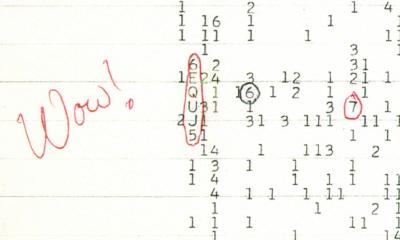There are many amazing living creatures in the world, one of which are shellfish. Cephalopods living in the depths of the oceans have the appearance of alien creatures. Individual representatives of the class can become excellent "exhibits" for science fiction films.
Origin
Mollusca means "soft" in Latin. Soft-bodied animals belong to the group of invertebrates - protostomes. The fact is that their oral opening is formed at the site of the blastopore - the mouth that forms in the embryo, and the mesoderm, from which the organs of these creatures develop, consists of 2 mesoblasts. These amazing creatures belong to the multicellular section - Protostomia, and the subsection of bilaterally symmetrical - Bilateria.
There are 2 scientific facts about the origin of mollusks:
- from ringed worms. In short, the arguments of the proponents of the theory are as follows: some of the lower forms of this class have a ladder-type nervous system, spiral crushing and characteristic features of organization characteristic of worms;
- from flatworms. In support of the theory, scientists consider the presence of 4 soft-bodied nerve trunks (both lateral and abdominal) in the nervous system.
Note! The first hypothesis of the origin of Mollusca looks more convincing, but at present no evidence of its unambiguity has been presented.
Or, as it is also called, the northern klion, in Latin "Clione limacina", a gastropod "angel" of stunning beauty. This is a predatory sea snail living in the icy waters of both hemispheres. Adult individuals feel confident at a depth of up to 500 m, while the larvae stay within 200 m. The body of the northern klion is almost transparent, has a torpedo shape. In length, the animal reaches only 2-2.5 cm. The largest individuals reach only 4 cm.

As a representative of Gymnosomata, it lacks a shell and gills, and from the “leg” in the process of reduction, only a small formation behind the head and a pair of locomotor outgrowths - “angel wings” were preserved. It feeds on limacins - "monkfish". The specified subtype is very popular in Japanese culture and is reflected as a character in fairy tales and anime, for example, in Pokemon, the characters Manaph and Phione are considered the prototypes of the "angel".
A gastropod representative of the Peltospiridae family, named as Crysomallon squamiferum, lives near thermal mineral springs.
The title contains 2 words:
- Crysomallon is translated from Greek as "having golden hair." The fact is that in the composition of the armadillo shell there is pyrite - a mineral that is popularly called "fool's gold";
- Squamiferum is Latin for "scale-bearer".
This is the most amazing mollusk in the world, as it is, in fact, the only organism in the formation of the skeleton of which iron sulfides participate, which gives the armadillo shell an extraordinary metal strength. Such a unique composition of the organism is associated with its habitat: water with minerals, zinc, copper and iron.

First discovered in 2001 in the Indian Ocean at a depth of 2430 m. The size of the armadillo shell can reach 4.5 cm, but on average it is 3.2 cm, and has a ribbed surface and the shape of a horn wrapped in 3 turns. Outside, the shell is covered with iron sulfides, the middle layer consists of a protein element. Representatives of this species have tentacles on their heads, and the red leg cannot completely hide in the shell. The armadillo feeds mainly on bacteria.
Crysomallon squamiferum is of great interest to science: today even the US Armed Forces are studying the subtype, which plans to use the results of their research to develop the most durable material in the world for the production of bulletproof vests and military helmets.
The amazing animal world has given us another unique creature - the "hellish vampire", Vampyroteuthis infernalis. The cephalopod vampire lives exclusively in the waters of the oceans, located in the temperate and tropical zones.

These unusual mollusks are the only representatives of the class in the world that spend their lives in water with a low oxygen content at a depth of 400 to 1000 m. They are very similar to squids and octopuses, reaching a length of up to 30 cm. Depending on the intensity of lighting, their body takes on color from black to bright red and even purple. The eyes are also capable of changing color to red or blue, reach 2.5 cm and are recognized as the most gigantic, if we take into account the proportions to the body. Another unusual fact: the body of the cephalopod is covered with spots - photoforms that allow it to glow under water for up to several minutes. The mollusk is able to control the brightness of the glow and the size of the resulting spots.
Another representative of the most unusual molluscs is the “fat cyphoma”, in Latin - Cyphoma gibbosa. The gastropod creature lives in the waters of the Caribbean Sea. The size of her body is from 2 to 4.4 cm. It has an oval shell of interesting colors: there are individuals with a bright cream, pale brown and yellow tint of the shell. It is noteworthy that the soft tissues of the snail are covered with characteristic spots, and the shell is inconspicuous. Cyphomas live on calcareous algae or on coral reefs. They feed on gorgonians - polyps.

The habitat of the cephalopod species Stauroteuthis syrtensis is the Atlantic Ocean. A luminous representative of the class of cephalopods lives at a depth of 500 to 4000 m. The size of its body with tentacles reaches 10 cm. They use the "light show" as bait for small crustaceans, which are their main food.

eared octopus
The deep-sea octopus Grimpoteuthis, otherwise Dumbo, Grimpoteuthis, lives mainly in the oceanic waters of the Mid-Atlantic Ridge, at a depth of 100 to 7000 m. It holds the record for deep water habitat. The fins of Grimpoteuthis resemble ears in shape and help it move in the water column. Has a semi-gelatinous body. Reaches 20 cm in length. The record size was 1.8 m with a weight of 6 kg. There are about 37 varieties of Dumbo octopuses and 4 families. Its diet consists of crustaceans, worms and small plankton. Swallows its prey completely.

golden lace
Connoisseurs of beauty will call the Nudibranch cephalopod the most unusual mollusk in the world due to its bright and unusual coloring. Even in the name there is a hint of the presence of gills, which look like soft outgrowths on the body. But some subspecies do not have such growths. Halgerda terramtuentiss is similar to a shellless snail and lives mainly in warm waters off the Hawaiian Islands. They are gourmets among representatives of their class: they eat plant and animal foods, including corals, crustaceans, and even their brethren. Nudibranchs are also hermaphrodites.

dangerous snail
Alviniconcha strummeri lives at depths of up to 1000 m near hydrothermal vents and resembles a sea urchin or cactus in appearance. Its shell has a rounded shape, the size of a golf ball, covered with small needles. The name of the mollusk is surprising: it is named after Joe Strummer, the vocalist from The Clash and part-time an ardent conservationist. Therefore, some rock fans call this representative of the Mollusca class "punk rock snail".

When exploring the wonderful world of mollusks, it is impossible not to stumble upon an unusual cephalopod that looks like the head of the Gorgon Medusa. A similar animal lives near Lizard Island, located off the coast of Australia.

The most mysterious creature from the list presented can rightly be called Histioteuthis bonnellii. The umbrella-shaped subspecies lives in the Atlantic Ocean at a depth of 1.2 to 1.5 km. Due to the fact that the habitat is located at impressive depths, this creature has not been fully studied to this day. To extract the "umbrella" to the surface is an impossible task.

Of course, there are still such unusual species as the giant Australian trumpeter, which reaches a length of up to 30 meters, or worm-shaped snails - creatures that have undergone convergent evolution. In order to study the numerous class of cephalopods, you only need a desire and a lot of free time.








